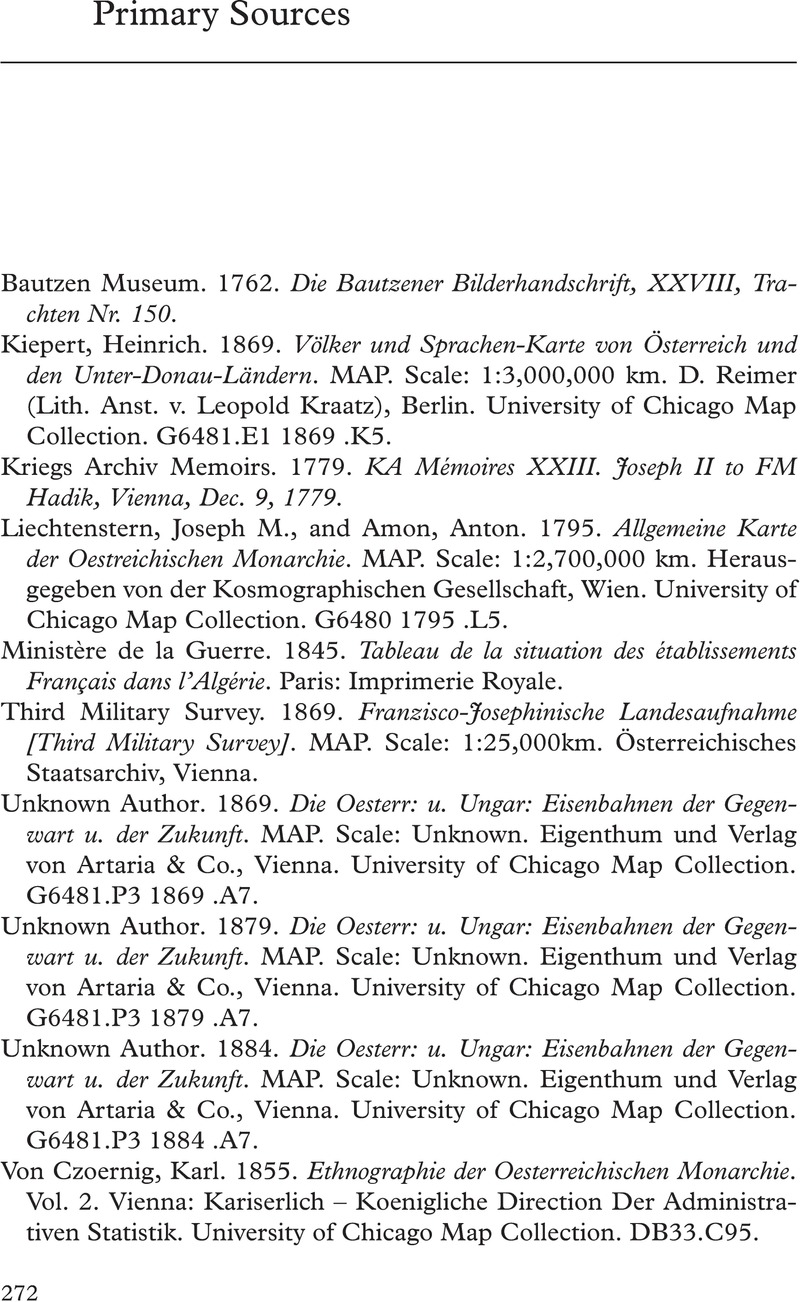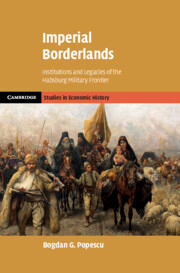Book contents
- Imperial Borderlands
- Cambridge Studies in Economic History - Second Series
- Imperial Borderlands
- Copyright page
- Contents
- Figures
- Tables
- Acknowledgments
- 1 Historical States, Imperialism, and Development
- 2 Imperialism and Extractive Institutions: A Theoretical Framework
- 3 The Habsburg Military Frontier
- 4 Military Colonialism and Economic Development
- 5 Colonial Institutions and Social Norms
- 6 Lasting Legacies Political Attitudes and Social Capital
- 7 Beyond the Habsburgs
- Epilogue
- Book part
- Primary Sources
- Index
- References
Primary Sources
Published online by Cambridge University Press: 09 November 2023
- Imperial Borderlands
- Cambridge Studies in Economic History - Second Series
- Imperial Borderlands
- Copyright page
- Contents
- Figures
- Tables
- Acknowledgments
- 1 Historical States, Imperialism, and Development
- 2 Imperialism and Extractive Institutions: A Theoretical Framework
- 3 The Habsburg Military Frontier
- 4 Military Colonialism and Economic Development
- 5 Colonial Institutions and Social Norms
- 6 Lasting Legacies Political Attitudes and Social Capital
- 7 Beyond the Habsburgs
- Epilogue
- Book part
- Primary Sources
- Index
- References
Summary

- Type
- Chapter
- Information
- Imperial BorderlandsInstitutions and Legacies of the Habsburg Military Frontier, pp. 272 - 305Publisher: Cambridge University PressPrint publication year: 2023



